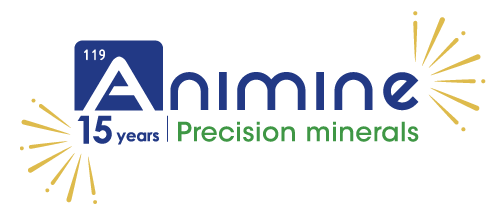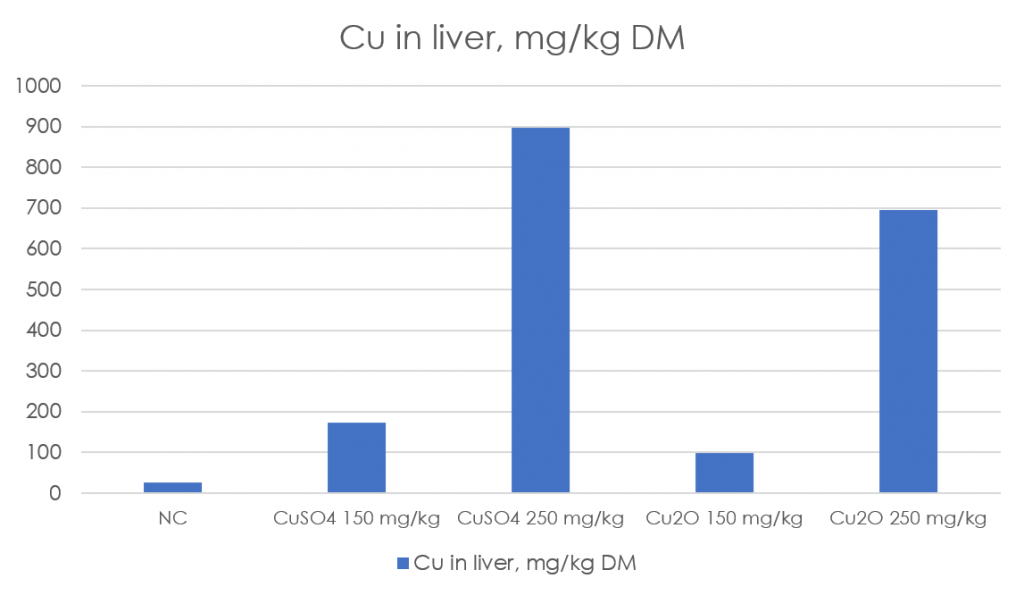> Research & Science
Copper accumulation in liver
Copper concentration in hepatic tissue is the most responsive biomarker of copper status in animals. In scientific experiments, when supplementation levels are below requirements, copper sources with high bioavailability are associated with increased liver Cu content. But when copper is supplemented at supra-nutritional levels to improve pigs and broilers digestive health, metal accumulation in the liver is a risk of toxicity for the animal. Even if pigs are more tolerant than ruminating animals (read more: Animals 4), growth-promoting supplementation levels of copper may induce oxidative stress in hepatic tissue.
A study carried out at Illinois University compared the effects of monovalent copper oxide (CoRouge®, Animine) and of copper sulfate in fattening pigs. After 116 days of supplementation at 250 mg/kg Cu, CoRouge® fed pigs accumulated less copper in liver and bile, and gained 7kg more body weight at slaughter age.
Source: Blavi et al, Inclusion of dicopper oxide instead of copper sulfate in diets for growing–finishing pigs results in greater final body weight and bone mineralization, but reduced accumulation of copper in the liver, Journ Anim Sci, 2021, Vol. 99, No. 6, 1-8

